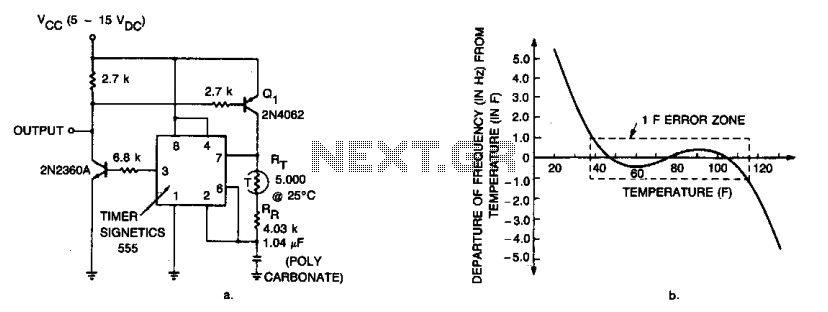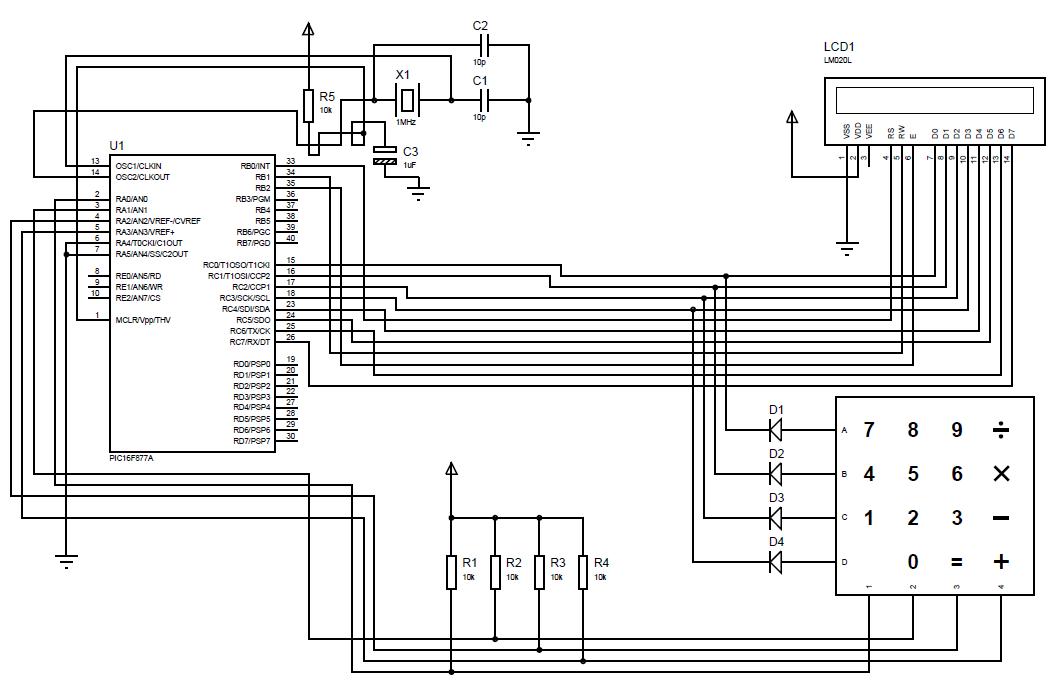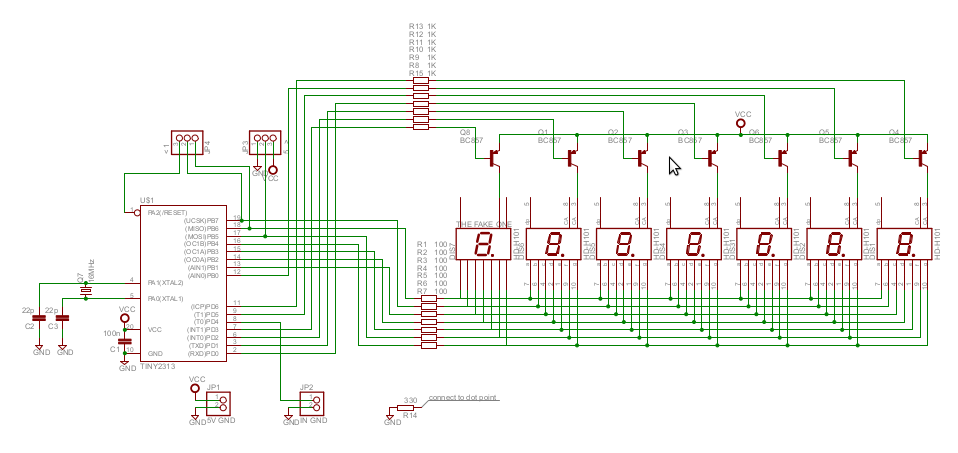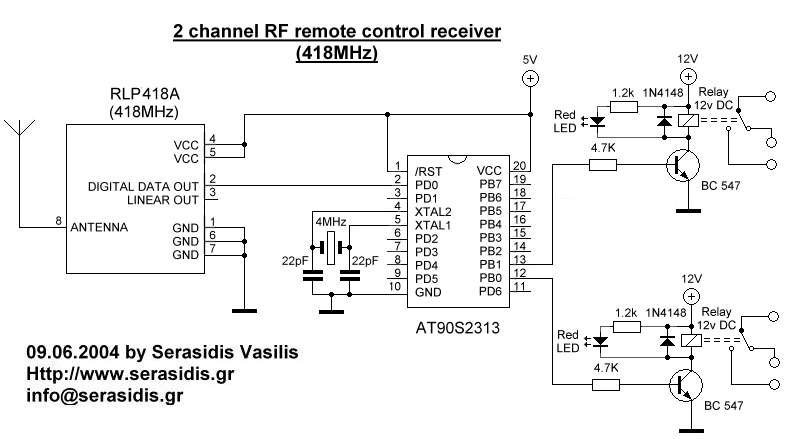
Temperature control

A pair of transistors and a thermistor in the charging network of a 555 timer allow this device to sense temperature and generate a corresponding frequency output. The circuit maintains an accuracy of ±1 Hz over a temperature range of 78°F.
The described circuit utilizes a 555 timer in astable mode, where the frequency of oscillation is influenced by the electrical resistance of a thermistor, which varies with temperature changes. The thermistor is typically a negative temperature coefficient (NTC) type, meaning its resistance decreases as temperature increases. This characteristic allows the circuit to produce a frequency output that corresponds to the ambient temperature.
In the charging network, two transistors are employed to amplify the signal from the thermistor and to provide stability to the frequency output. The configuration of these transistors can help in managing the current flow through the thermistor and enhancing the sensitivity of the temperature measurement. The output frequency is derived from the time constant established by the charging and discharging cycles of the capacitor in conjunction with the variable resistance of the thermistor.
The accuracy of ±1 Hz over a temperature range signifies that the circuit is designed for precise temperature monitoring applications, making it suitable for environments where temperature stability is crucial. The 555 timer's ability to operate with a wide supply voltage range adds to the versatility of the circuit, enabling it to be integrated into various electronic systems for temperature sensing and control.
Overall, this circuit represents an efficient approach to temperature measurement, utilizing common electronic components to achieve reliable performance in real-world applications.A couple of transistors and a thermistor in the charging network of the 555 type timer enable this device to sense temperature ^nd produce a corresponding frequency output. The circuit is accurate to within ±1 Hz over a 78°F temperature range.
The described circuit utilizes a 555 timer in astable mode, where the frequency of oscillation is influenced by the electrical resistance of a thermistor, which varies with temperature changes. The thermistor is typically a negative temperature coefficient (NTC) type, meaning its resistance decreases as temperature increases. This characteristic allows the circuit to produce a frequency output that corresponds to the ambient temperature.
In the charging network, two transistors are employed to amplify the signal from the thermistor and to provide stability to the frequency output. The configuration of these transistors can help in managing the current flow through the thermistor and enhancing the sensitivity of the temperature measurement. The output frequency is derived from the time constant established by the charging and discharging cycles of the capacitor in conjunction with the variable resistance of the thermistor.
The accuracy of ±1 Hz over a temperature range signifies that the circuit is designed for precise temperature monitoring applications, making it suitable for environments where temperature stability is crucial. The 555 timer's ability to operate with a wide supply voltage range adds to the versatility of the circuit, enabling it to be integrated into various electronic systems for temperature sensing and control.
Overall, this circuit represents an efficient approach to temperature measurement, utilizing common electronic components to achieve reliable performance in real-world applications.A couple of transistors and a thermistor in the charging network of the 555 type timer enable this device to sense temperature ^nd produce a corresponding frequency output. The circuit is accurate to within ±1 Hz over a 78°F temperature range.





